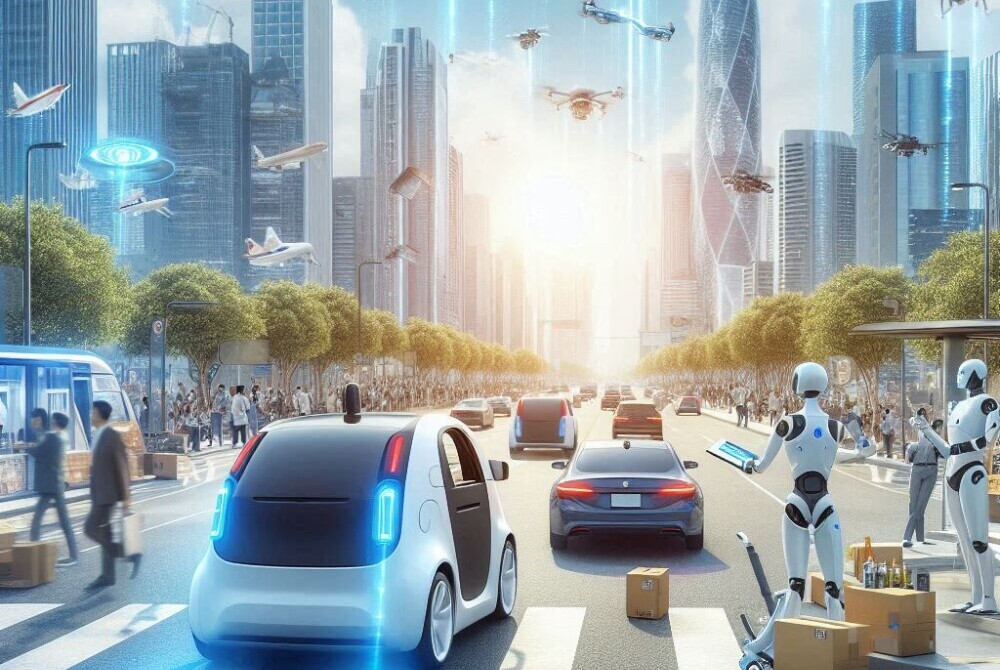 AI agents and autonomous systems might sound like sci-fi, but they’re part of our everyday lives now. They operate behind the scenes, making decisions, solving problems, and transforming industries. Understanding what they are and how they differ is key to grasping their role in our world.
AI agents and autonomous systems might sound like sci-fi, but they’re part of our everyday lives now. They operate behind the scenes, making decisions, solving problems, and transforming industries. Understanding what they are and how they differ is key to grasping their role in our world.
An AI agent is a system designed to make decisions and perform tasks on its own. This might mean recommending what show to watch next based on your preferences or managing large-scale data to improve an organization’s efficiency. They gather information and act on it, virtually or physically, depending on the task.
Autonomous systems, on the other hand, are machines or networks that can perform complex tasks like self-driving cars or robotic factory workers. These systems adapt to changing environments without needing constant human input, allowing for innovation in places where human limitations would otherwise be a barrier.
So, why are these technologies important? AI agents and autonomous systems reduce drudgery, enhance accuracy, and allow us to focus on creative and complex problems. They impact every corner of life, from healthcare to entertainment, streamlining processes and aiding in life-changing advancements.
Industries across the globe harness these technologies. Whether it’s manufacturing, where robots enhance production efficiency, or agriculture, where autonomous tractors optimize crop yields, the applications are endless. Recognizing their influence helps us adapt and leverage their potential more efficiently.
The Rise of AI Agents: From Assistance to Autonomy
AI agents didn’t just pop up overnight. Over the years, they’ve gone from simple task helpers to complex decision-makers. It all started with basic algorithms that automated repetitive tasks, but advances in technology have supercharged their capabilities.
Some major milestones have pushed AI agents into the spotlight. Think about when Apple’s Siri was introduced—that was a game-changer in personal AI assistance. Today, we have even more sophisticated systems like machine learning platforms and virtual assistants that understand and predict human behavior in nuanced ways.
AI agents are now central to how we interact with technology daily. They operate on smartphones, in smart homes, and within business systems. They act as dedicated assistants, taking on everything from scheduling appointments to answering complex customer queries, learning and evolving all the while.
Their integration into digital life has created a new sort of synergy between humans and machines. This relationship helps us manage the flood of information and decision-making in our fast-paced lives without getting overwhelmed.
Instead of replacing humans, AI agents augment how we function, offering valuable insights and freeing us from mundane tasks. As they continue to evolve, they’re expected to handle even more complex issues, pushing the boundaries of autonomy.
The Architecture and Functionality of Autonomous Systems
Understanding the nuts and bolts of autonomous systems means diving into their architecture. These systems aren’t built from a single element—they are an ecosystem of technologies. At the heart are machine learning algorithms, which allow systems to learn and adapt in real-time. They process data, make decisions, and improve performance without constant external input.
Beyond algorithms, sensors play a starring role. They gather environmental data, acting like a system’s eyes and ears. These might include cameras, radar, or lidar, each providing different sensory inputs. For a self-driving car, for example, sensors detect everything from the vehicle’s speed to the nearby pedestrian movements.
Robust onboard processors make sense of all this data. This high-stakes brainpower means autonomous systems can analyze complex information rapidly and make critical decisions in a split second. This capability is vital, particularly in dynamic environments where everything can change in a blink.
Technical design doesn’t stop with just the individual elements—it’s how they work together. A well-integrated system is like a finely tuned orchestra with each component doing its part to produce harmony. This means combining machine learning models with sensor data and processors to create systems that function smoothly and reliably.
Let’s consider some real-world successes. In warehouses, autonomous robots efficiently manage inventory by navigating space and performing tasks with precision. On the roads, autonomous vehicles are beginning to navigate urban environments with increasing confidence. This wouldn’t be possible without the seamless integration of technologies.
The journey from data to decision in autonomous systems shows how integral technology is to changing how we live and work. By understanding their architecture, we see the future of automation making life’s issues more manageable, leading to greater efficiencies and more creative possibilities.
Benefits and Challenges of Deploying Autonomous Systems
Autonomous systems are changing the economic landscape, bringing efficiency and cost savings to various sectors. They perform tasks faster and with more accuracy than traditional methods. By automating routine processes, businesses can reduce labor costs and allocate human resources to creative and strategic tasks.
Incorporating these systems can lead to significant productivity gains. They make decisions with precision, minimizing errors and maximizing efficiency. This isn’t just good for profit margins but also elevates the quality of services and products offered to consumers.
Despite the perks, there’s no denying that autonomous systems come with their challenges. One of the biggest hurdles is navigating the ethical landscape. With machines making critical decisions, questions about accountability and moral responsibility arise.
Societal concerns are also significant—what happens to jobs when machines take over tasks previously done by humans? This shift requires us to reevaluate workforce development strategies and prepare for a more technology-driven future.
The technical challenges are notable too. Designing systems that can handle real-world complexity with reliability presents significant hurdles. These include issues around connectivity, cybersecurity, and ensuring that systems can make safe decisions in unforeseen situations.
Working through these challenges isn’t easy, but it’s part of moving toward a future where autonomous systems play a central role. Balancing benefits with these challenges requires thoughtful consideration and continuous improvement. Solutions need to be both technological and social, ensuring that as these systems advance, they do so ethically and smartly.
AI Agents in Action: Industry Applications and Innovations
The influence of AI agents is vast, touching virtually every industry imaginable. In healthcare, they’re transforming how we diagnose and treat ailments. AI-powered tools analyze medical data at lightning speed, helping doctors pinpoint diseases and personalize treatment plans like never before. This enhances patient outcomes and offers a new frontier in medical research.
In the realm of transportation, AI agents are key players. Self-driving cars are shifting from futuristic dreams to a reality cruising down our streets. These cars leverage AI to navigate complex urban landscapes efficiently and safely, promising to revolutionize personal and commercial transport alike.
Logistics, too, is reaping the rewards. AI-driven systems optimize routes, manage delivery schedules, and streamline supply chains, cutting costs and boosting efficiency all around. Businesses can better predict demand cycles, reducing waste and ensuring products reach consumers faster and more reliably.
The financial world isn’t left behind. AI agents assist in risk assessments, fraud detection, and even customer service. They’re capable of processing vast amounts of data to uncover trends and insights that a human might miss, creating safer and more tailored financial products.
Each of these examples reflects not just the diversity of AI applications but also their potential to unlock new efficiencies and solutions. By observing these innovations, other industries can learn and adapt, paving the way for broader adoption of AI technologies. Combining creativity with intelligence leads to solutions that enhance how we live and work.
Future Directions and Ethical Considerations
Looking forward, the landscape of AI agents and autonomous systems promises continual evolution. New developments in AI algorithms and computing power mean that even more complex problems can be tackled. Industries that haven’t fully embraced AI yet have the groundwork for innovative technologies that address emerging challenges.
The role of human oversight remains pivotal despite these technological advances. While AI agents can perform extraordinary tasks, human input guides their development and implementation. Ensuring that these systems maintain a course aligned with ethical standards is essential for their integration into society. This includes fostering transparency in how AI systems make decisions and ensuring they’re accountable to human values.
Balancing innovation with accountability calls for clear and consistent ethical guidelines. Without these, rapid technological progress might outpace our ability to govern it responsibly. Investing in education and dialogue around AI ethics empowers future leaders and users to shape AI’s path smartly.
Explore the promising intersection of AI and sustainability. AI technologies present opportunities to address environmental challenges through smarter resource management and innovative solutions. Whether it’s cutting energy use or optimizing renewable resources, AI has the potential to contribute substantially to a more sustainable world.
The ongoing narrative of AI agents and autonomous systems hinges on their capacity to enhance human life while preserving our ethical compass. By harnessing these technologies intelligently, we can chart a course towards a future where humans and machines not only coexist but thrive together.
